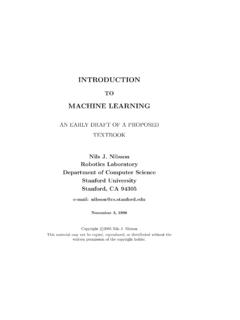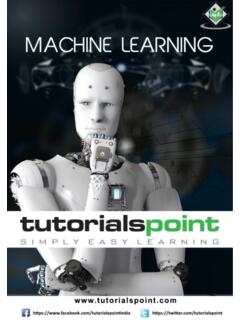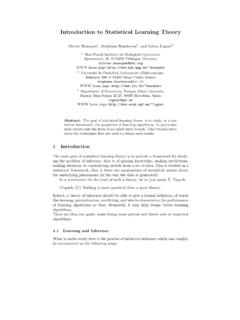Transcription of Quantum Machine Learning
1 Quantum Machine LearningJacob Biamonte1,2,*, Peter Wittek3, Nicola Pancotti4, PatrickRebentrost5, Nathan Wiebe6, and Seth Software Initiative, Skolkovo Institute of Science andTechnology, Skoltech Building 3, Moscow 143026, Russia2 Institute for Quantum Computing, University of Waterloo,Waterloo, N2L 3G1 Ontario, Canada3 ICFO-The Institute of Photonic Sciences, Castelldefels (Barcelona),08860 Spain4 Max Planck Institute of Quantum Optics , Hans-Kopfermannstr. 1,D-85748 Garching, Germany5 Massachusetts Institute of Technology, Research Laboratory ofElectronics, Cambridge, MA 021396 Station Q Quantum Architectures and Computation Group,Microsoft Research, Redmond WA 980527 Massachusetts Institute of Technology, Department of MechanicalEngineering, Cambridge MA 02139 USAMay 14, 2018 AbstractFuelled by increasing computer power and algorithmic advances, ma-chine Learning techniques have become powerful tools for finding patternsin data.
2 Since Quantum systems produce counter-intuitive patterns be-lieved not to be efficiently produced by classical systems, it is reasonableto postulate that Quantum computers may outperform classical comput-ers on Machine Learning tasks. The field of Quantum Machine learningexplores how to devise and implement concrete Quantum software thatoffers such advantages. Recent work has made clear that the hardwareand software challenges are still considerable but has also opened pathstowards before they possessed computers, human beings strove to find patterns indata. Ptolemy fit observations of the motions of the stars to a geocentric model of1 [quant-ph] 10 May 2018the cosmos, with complex epicycles to explain retrograde motions of the the 16th century, Kepler analyzed the data of Copernicus and Brahe to reveala previously hidden pattern: planets move in ellipses with the sun at one focusof the ellipse.
3 The analysis of astronomical data to reveal such patterns gaverise to mathematical techniques such as methods for solving linear equations(Newton-Gauss), Learning optima via gradient descent (Newton), polynomialinterpolation (Lagrange), and least-squares fitting (Laplace). The nineteenthand early twentieth century gave rise to a broad range of mathematical methodsfor analyzing data to learn the patterns that it construction of digital computers in the mid 20th century allowedthe automation of data analysis techniques. Over the past half century, therapid progression of computer power has allowed the implementation of linearalgebraic data analysis techniques such as regression and principal componentanalysis, and lead to more complex Learning methods such as support vectormachines.
4 Over the same time frame, the development and rapid advance ofdigital computers spawned novel Machine Learning methods. Artificial neuralnetworks such as perceptrons were implemented in the 1950s [1], as soon ascomputers had the power to realize them. Deep Learning built on neural networkssuch as Hopfield networks and Boltzmann machines, and training methods suchas back propagation, were introduced and implemented in the 1960s to 1990s [2].In the past decade, particularly in the past five years, the combination of powerfulcomputers and special-purpose information processors capable of implementingdeep networks with billions of weights [3], together with their application to verylarge data sets, has revealed that such deep Learning networks are capable oflearning complex and subtle patterns in mechanics is well-known to generate counter intuitive patternsin data.
5 Classical Machine Learning methods such as deep neural networksfrequently have the feature that they can both recognize statistical patterns indata, and produce data that possess the same statistical patterns: they recognizethe patterns that they produce. This observation suggests the following hope. Ifsmall Quantum information processors can produce statistical patterns that arecomputationally difficult to be produced by a classical computer, then perhapsthey can also recognize patterns that are equally difficult to recognize realization of this hope depends on whether efficient Quantum algorithmscan be found for Machine Learning . A Quantum algorithm is a set of instructionssolving a problem, for example finding out whether two graphs are isomorphic,that can be performed on a Quantum computer.
6 Quantum Machine learningsoftware makes use of Quantum algorithms as part of a larger the steps that Quantum algorithms prescribe, it becomes clear thatthey have the potential to outperform classical algorithms for specific potential is known as Quantum notion of a Quantum speedup depends on whether one takes a formalcomputer science perspective which demands mathematical proofs or a per-spective based on what can be done with realistic, finite-size devices whichrequires solid statistical evidence of a scaling advantage over some finite rangeof problem sizes. For the case of Quantum Machine Learning , the best possible2performance of classical algorithms isn t always known. This is similar to thecase of Shor s polynomial-time Quantum algorithm for integer factorization: nosubexponetial-time classical algorithm has been found, but the possibility is notprovably ruled of a scaling advantage contrasting Quantum and classicalmachine Learning would rely on the existence of a Quantum computer and is a socalled, benchmarking problem.
7 Such advantages could include improved classifi-cation accuracy and sampling of classically inaccessible systems. Accordingly, Quantum speedups in Machine Learning are currently characterized using idealizedmeasures from complexity theory: query complexity and gate complexity (seeBox 1). Query complexity measures the number of queries to the informationsource for the classical or Quantum algorithm. A Quantum speedup results ifthe number of queries needed to solve a problem is lower for the Quantum - thanfor the classical algorithm. To determine the gate complexity, the number ofelementary Quantum operations, or gates, required to obtain the desired resultare and gate complexity are idealized models which quantify the necessaryresources to solve a problem class.
8 Without knowing how to map this idealizationto reality, not much can be said about the necessary resource scaling in a real-world scenario. Therefore, the required resources of classical Machine learningalgorithms are mostly quantified by numerical experimentation. The resourcerequirements of Quantum Machine Learning algorithms are likely to be similarlydifficult to quantify in practice. The analysis of their practical feasibility is acentral subject of this will be seen throughout the review, there are Quantum algorithms formachine Learning that exhibit Quantum speedups [4,5,6,7]. For example, thequantum basic linear algebra subroutines (BLAS) Fourier transforms, find-ing eigenvectors and eigenvalues, solving linear equations exhibit exponentialquantum speedups over their best known classical counterparts [8,9,10].
9 Thisquantum BLAS (qBLAS) translates into Quantum speedups for a variety of dataanalysis and Machine Learning algorithms including linear algebra, least-squaresfitting, gradient descent, Newton s method, principal component analysis, linear,semidefinite, and quadratic programming, topological analysis, and supportvector machines [9,11,12,13,14,15,16,17,18,19]. At the same time, spe-cial purpose Quantum information processors such as Quantum annealers andprogrammable Quantum optical arrays are well-matched to deep Learning archi-tectures [20,21,22]. While it is not completely clear yet to which extent thispotential is born out in reality, there are reasons to be optimistic that quantumcomputers can recognize patterns in data that surpass the reach of organize this review as follows.
10 The machines that learn can be eitherclassical [23,24,25,26,27,28,29,30,31,32] or Quantum [8,33,9,34,13,35,11,36]. The data they analyze can be either classical or Quantum statesproduced by Quantum sensing or measuring apparatus [37,30]. We briefly discussconventional Machine Learning the use of classical computers to find patternsin classical data. We then turn to Quantum Machine Learning , where the data3that the Quantum computer analyzes can be either classical data, which endsup encoded as Quantum states, or Quantum data. Finally, we discuss brieflythe problem of using classical Machine Learning techniques to find patterns inquantum 1. Quantum SpeedupsQuantum computers use effects such as Quantum coherence and entanglement toprocess information in ways that classical computers can not.



![arXiv:0706.3639v1 [cs.AI] 25 Jun 2007](/cache/preview/4/1/3/9/3/1/4/b/thumb-4139314b93ef86b7b4c2d05ebcc88e46.jpg)
![arXiv:1301.3781v3 [cs.CL] 7 Sep 2013](/cache/preview/4/d/5/0/4/3/4/0/thumb-4d504340120163c0bdf3f4678d8d217f.jpg)
![@google.com arXiv:1609.03499v2 [cs.SD] 19 Sep 2016](/cache/preview/c/3/4/9/4/6/9/b/thumb-c349469b499107d21e221f2ac908f8b2.jpg)




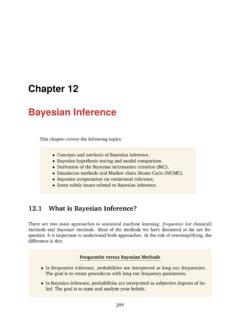
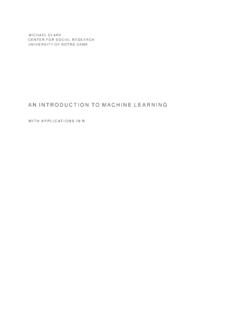
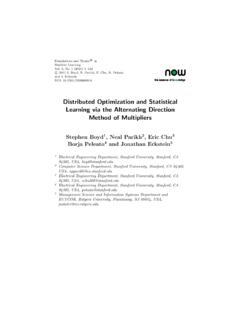
![arXiv:1406.1078v3 [cs.CL] 3 Sep 2014](/cache/no-preview.jpg)

